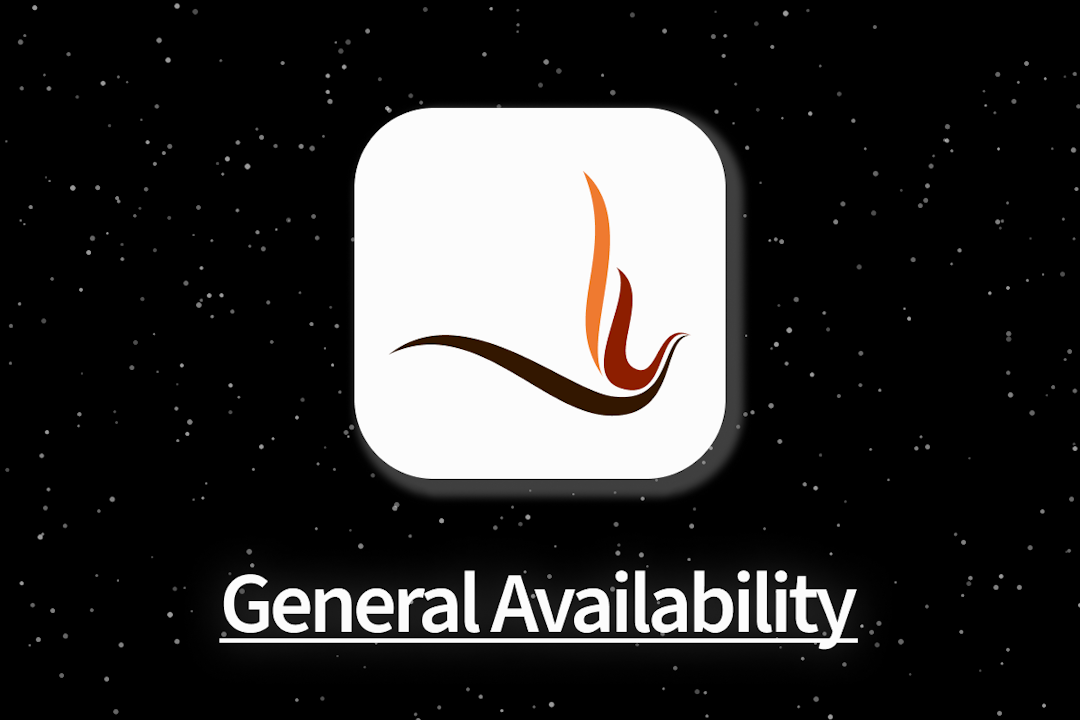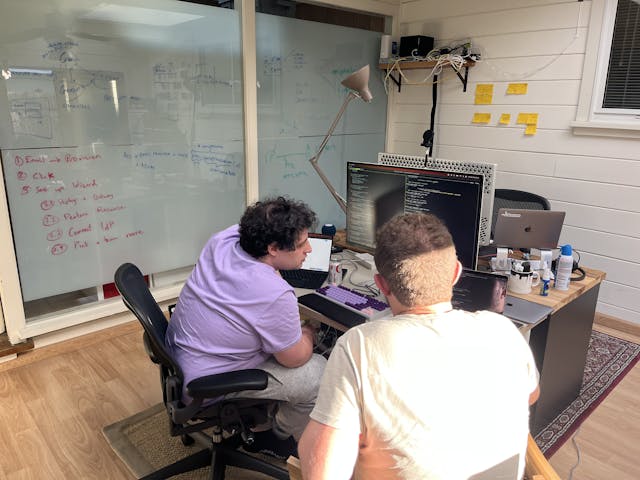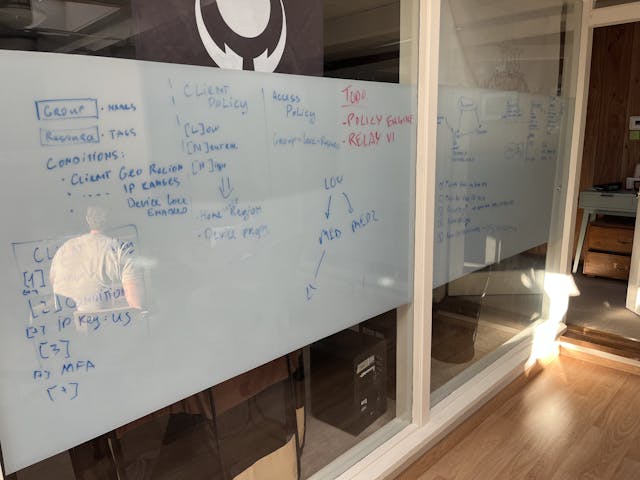Founder
April 2024 Update: GA

What's new:
- Firezone 1.0 signups are now open! Sign up here or request a demo.
- New Team plan at $5 user/month.
- iOS and Android apps are now available.
Firezone 1.0 GA
After months of beta testing with our early adopters, today we're announcing that Firezone 1.0 is now generally available. We couldn't be more excited for you to try it.
Sign up now to get started.
The road to 1.0
This release marks a significant milestone for Firezone.
When we announced Firezone 1.0 was coming last July, we knew we had our work cut out for us. Until that point, Firezone was a simple web app into a single Docker image. Although a great fit for homelabbers and small groups, it wasn't suited to address the remote access needs of larger organizations.
It was easy to get up and running quickly with Firezone, but as the number of users, devices, and networks to protect grew within an organization, so did the complexity of managing it all.
So we went back to the whiteboard to reimagine how Firezone would look if we rebuilt it from the ground up The Right Way™ -- with scalability and ease of use in mind.


We spent the next several months prototyping, testing, and iterating on a new architecture that would allow Firezone to scale to hundreds of thousands of users and millions of devices.
The stack
We weren't going to squander a good opportunity to rethink our stack choice, but it remained largely the same: the new Firezone would be built with Elixir for the control plane and Rust for the data plane.
Why?
Elixir has been getting lots of acclaim in recent years for its concurrency model and fault-tolerance features. And for good reason: it runs on Erlang's BEAM VM, the same technology that powers the telecom industry's most reliable systems. There's a good chance the device you're reading this on has an IP address handed out by an Erlang-powered telecom switch.
As it turns out, managing connections for a remote access product is a lot like managing messages across a telecom network:
1. Peer A wants to connect to Peer B.
2. Is it allowed?
Yes: here are their addresses and keys to secure the connection.
No: drop the connection.
And Elixir's concurrency model makes it easy to manage thousands of these connection "intents" on very little hardware -- just a few tiny VMs orchestrate all connections across all our customers, globally.
And what about the data plane? For that, we turned to Rust.
Rust forms the network backbone of Firezone, handling all the heavy lifting of encrypting and decrypting packets as they flow between Clients and Gateways. As far as systems languages go, Rust couldn't be a better fit for the job. Its memory safety guarantees eliminate entire classes of bugs that plague other systems languages, making it a great choice for a security-critical application like Firezone.
And it has build targets for just about every platform under the sun. Our core connectivity library, for example, runs reliably on iOS, Android, Windows, Linux, and macOS.
We'll be sharing more about our stack choices in future blog posts, but suffice to say, we're very happy with the results so far.
What's unique about Firezone?
There are a lot of remote access solutions out there, so what makes Firezone different?
For starters, Firezone uses WireGuard® under the hood -- a new VPN protocol that's faster and more secure than traditional VPNs. But that's just the start.
We learned from Firezone 0.x that organizations grappling with remote access at scale needed things like integrations with identity providers that keep directory information in sync, high availability features, and an easier way to manage access policies that don't require a PhD in network security.
Firezone 1.0 delivers on all of that and more.
Core concepts in 1.0
Before we dive into the new features, let's first cover some core concepts new to Firezone:
- Resource: A Resource is any DNS name, IP, or network (CIDR range) you wish to manage access for. DNS-based Resources can be used to manage access to internal or external applications and optionally be configured to match all subdomains as well. CIDR-based Resources can be used to manage access for an entire subnets, similar to a traditional VPN.
- Gateway: Gateways are Firezone servers that run on your infrastructure. Gateways must be defined within a Site, and any traffic to/from Resources associated with a Site will pass through one of that Site’s Gateways. Gateways are designed to be lightweight and don't require persistent storage to function.
- Site: Sites are user-created environments where admins
can manage Resources and the Gateways that enable access to those Resources. A
typical Site name might be
SJC lab 1,Chicago office, orTestbench subnet. All Gateways and Resources in a Site are assumed to be able to reach each other in a shared network context such as a VPC or LAN.
For a more detailed overview of these concepts, check out the FAQ and glossary sections of our documentation.
High availability
The first major feature in 1.0 we should discuss is high availability. Firezone achieves high availability by allowing you to deploy multiple Gateways within a given Site.
Each Firezone Gateway is a tiny, self-contained binary that needs only a single environment variable to function. Throw it in a VM, a container, or on an IoT device -- it's lightweight enough to run everywhere. Its sole purpose is to shuttle encrypted packets between Clients and Resources.
After you create a Site, you can deploy as many Gateways into that Site as you'd like. All Gateways in the Site will work in unison to provide load balancing and automatic failover for all connections to Resources in the Site.
If a Gateway goes offline or becomes overloaded, any Clients connected to it will automatically migrate their connections to a healthy Gateway in the Site. This process is completely transparent to the user and happens in most cases within a few seconds.
Armed with this ability, admins can now enjoy a simple maintenance process: (1) take a Gateway down, (2) upgrade it, and (3) bring it back up. That's it. No more lengthy maintenance windows, backing up configurations, or worrying about extended downtime.
A nice side effect of this architecture is that it provides near infinite horizontal scalability, which works as follows:
When a Client wants to connect to a protected resource, it sends a connection intent message to the control plane API. If the intent is approved, the control plane responds with a healthy Gateway to connect to. If there are multiple healthy Gateways, the control plane will round-robin between them, effectively splitting the load across all Gateways in the Site.
Need more throughput? Simple: deploy more Gateways. The control plane will automatically distribute the load across all of them.
We think high availability is such a core feature in a remote access solution that we made failover and load balancing available on all plans, including the Starter tier. Read more about how it works in our documentation.
Firewall hole-punching
You know what's not fun? Configuring firewalls.
More precisely, configuring your organization's cloud or corporate firewalls to allow incoming connections from the internet. Not only is it a pain to manage at scale, it also exposes your organization to all kinds of security risks.
So we rearchitected Firezone to include the same NAT traversal techniques that WebRTC applications have enjoyed for years now: STUN and TURN, known collectively as ICE.
As you can probably surmise from the above links, these are well-established standards for doing reliable NAT traversal. These have been battle-tested in the field for years across all kinds of products -- Firezone is only the latest to benefit from them.
What does this mean for you? It means you can deploy Firezone without touching a single firewall configuration and still enjoy the same level of performance as if you did. Attack surface is minimized and connections are direct. It's a win-win.
For the curious readers, you can find our implementation of ICE, aptly named "snownet", in our repository here.
Directory sync
The last feature we want to highlight in this announcement is directory sync. Firezone currently supports directory sync for Okta, Entra ID, and Google Workspace, with more providers on the way.
Anyone who's ever managed a large organization knows the pain of keeping user and group information in sync across multiple systems. It's a nightmare to manage manually. And it's error-prone, leading to security risks and compliance issues.
Experienced admins will now be thinking, "But what about SCIM? Doesn't that make this easy?". Sadly, SCIM today is one of those standards that isn't. Entire business models have been optimized to leverage inconsistencies in SCIM implementations across different identity providers.
So Firezone doesn't use SCIM. Instead, we built our very own directory sync engine that can be extended to virtually any source of identity data, regardless of whether they support SCIM. If it has a REST API, we can probably sync with it.
Directory sync is available only for the Enterprise plan so we can be sure it'll work reliably for your organization. Read more about how it works or contact sales if you'd like a first-hand demo.
What's next?
We covered only a fraction of what's new in Firezone in this post. Go sign up and see what else is new for yourself, or request a demo if you'd like to better understand how Firezone can help your organization.
We have more to announce in the coming weeks, so subscribe to our newsletter below to stay in the loop.